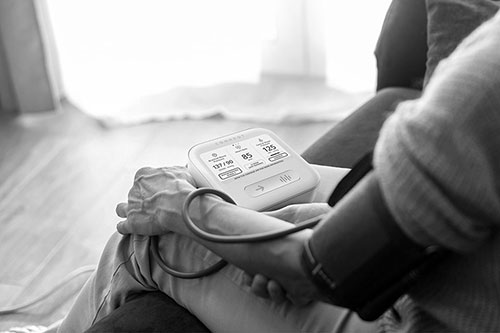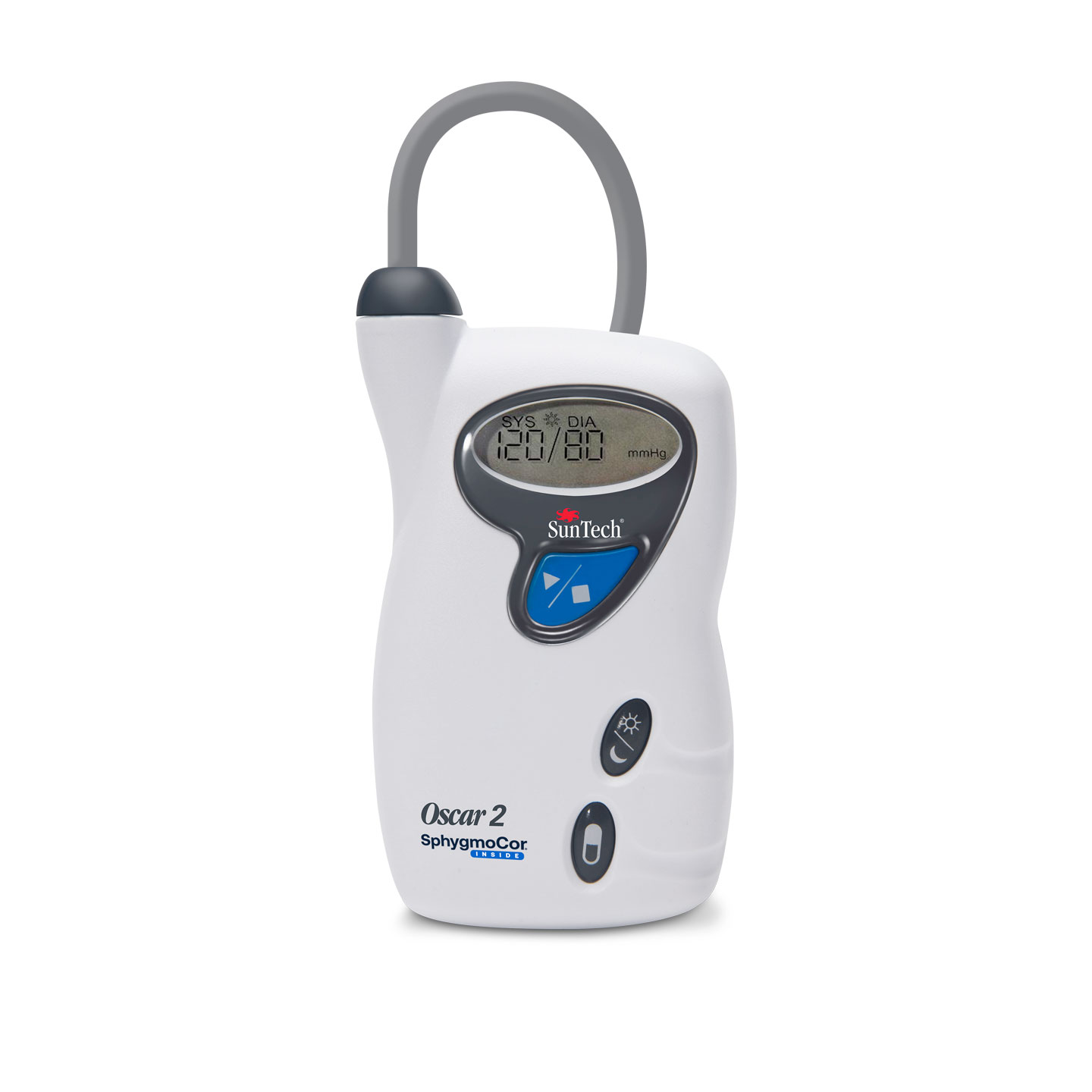Renal Disease
Navigate Therapies for Chronic Kidney Disease Management
with Digital Vascular Biomarkers
37M
Kidney disease affects an estimated 37 million people in the US.1
Renal Disease & Arterial Stiffening Go Hand-in-Hand

Arterial stiffness is associated with adverse cardiovascular outcomes, particularly in end-stage renal disease (ESRD)
Doyle A, Mark PB, Johnston N, Foster J, Connell JM, et. al.
Nephron Clinical Practice
[Chronic Kidney Disease] amplifies the inflammatory cascade's activation and is responsible for altering the endothelium function, increasing the vascular tone, wall thickening, and favors calcium deposits in the arterial wall.
Inserra F, Forcada P, Castellaro A, Castellaro C.
Frontiers in Medicine
Renal function is a determinant of vascular stiffness even in patients with severe atherosclerotic disease.

Arterial Stiffness and Renal Function
Arterial stiffness reduces artery elasticity, exerting continuous high pressure on kidney vessels, damaging them, and potentially hastening chronic kidney disease progression. As kidney function worsens, its regulation of blood pressure and fluid balance declines, further increasing arterial stiffness and creating a harmful feedback loop. Epidemiological evidence links arterial stiffness with greater renal impairment risks, highlighting the need for interventions like lifestyle adjustments and blood pressure management to mitigate these effects and maintain renal health.
Optimize Renal Disease Management
Vascular biomarkers are crucial for managing renal disease, providing insights into patients' cardiovascular health through measures like arterial stiffness, augmentation index, and central blood pressure. These indicators help assess cardiovascular risk, monitor disease progression, and guide treatment strategies, including the adjustment of antihypertensive medications and lifestyle changes.
By enabling personalized treatment plans based on individual vascular profiles, vascular biomarkers are vital for predicting outcomes, optimizing renal disease management, and minimizing cardiovascular complications to enhance patient care.

Utility of Vascular Biomarkers in Renal Disease

Aortic stiffness and central SBP are independently associated with orthostatic SBP fall in CKD patients. This suggests that enhanced arterial stiffness may be an underlying mechanism in baroreflex dysfunction, and may partly explain the vascular risk in CKD patients.
Kirkham FA, Rankin P, Parekh N, Holt SG, Rajkumar C
Observational Study
Hemodialysis affected cardiovascular system with the parameters derived from pulse-wave-analysis (systolic and augmented pressures, pulse height, ejection duration, SEVR) being significantly different at the end of dialysis from those before the session. Combination of pulse-wave-analysis with the monitoring of overhydration provides a new insight into the impact of hemodialysis on cardiovascular system.

[Central Pulse Pressure] is a better parameter for predicting the occurrence of LVH in patients with CKD.
Vascular Biomarkers Explained
Vascular biomarkers are revolutionizing not only cardiovascular health management but also clinical research and personal wellness strategies.
These critical indicators offer a comprehensive evaluation of the cardiovascular system's health across a broad spectrum, from clinical trials to individual health monitoring. By assessing key markers such as endothelial function, arterial stiffness, and coronary flow reserve, they enable a nuanced understanding of cardiovascular risks and conditions.
This valuable insight facilitates early intervention, personalized health optimization, and the development of targeted treatments in clinical settings, significantly advancing patient care and wellness initiatives.
What it Is
Brachial blood pressure measures the pressure of blood at the brachial artery using a blood pressure cuff.
Why it Matters
High blood pressure is a major risk factor for heart disease and stroke, both of which are leading causes of death in the US.
What it Is
Calculated using pulse wave analysis and a traditional brachial cuff, central blood pressure measures pressure at the root of the aorta.
Why it Matters
Central blood pressure reflects key vascular issues such as arterial stiffness, which makes it a more accurate predictor of subclinical cardiovascular disease than traditional brachial blood pressure alone.
What it Is
Subendocardial viability ratio measures the supply of blood that flows to your inner heart muscle in relation to demand.
Why it Matters
SEVR offers insight into how well a person’s heart can handle the stress of exercise.
What it Is
Augmentation pressure refers to the increase in central aortic pressure caused pressure wave reflection.
Why it Matters
A marker of arterial stiffness, elevated augmentation pressure is associated with cardiovascular risk factors as well as increased cardiovascular morbidity and mortality.
What it Is
An indirect measure of arterial stiffness that increases with age, augmentation index reflects the burden stiff arteries place on the heart.
Why it Matters
Chronic stress on the heart and the cardiovascular system can lead to heart failure and hypertrophy (enlarged heart).
What it Is
The height of pressure at the heart, central pulse pressure shows the pressure to which key organs like the heart, brain, and kidneys are exposed.
Why it Matters
Central pulse pressure helps identify the risk of end organ damage to key organs like the brain, kidney and heart.
What it Is
Pulse wave velocity measures arterial stiffness.
Why it Matters
Increases in arterial stiffness are generally based on the loss of elasticity in the aorta artery walls over time and increases the strain on the heart from heightened pressures. Increased aortic stiffness using PWV is a validated predictor of cardiovascular events and all-cause mortality.
 Central Blood Pressure
Central Blood Pressure
What it Is
Calculated using pulse wave analysis and a traditional brachial cuff, central blood pressure measures pressure at the root of the aorta.
Why it Matters
Central blood pressure reflects key vascular issues such as arterial stiffness, which makes it a more accurate predictor of subclinical cardiovascular disease than traditional brachial blood pressure alone.
 Brachial Blood Pressure
Brachial Blood Pressure
What it Is
Brachial blood pressure measures the pressure of blood at the brachial artery using a blood pressure cuff.
Why it Matters
High blood pressure is a major risk factor for heart disease and stroke, both of which are leading causes of death in the US.
 Subendocardial Viability Ratio
Subendocardial Viability Ratio
What it Is
Subendocardial viability ratio measures the supply of blood that flows to your inner heart muscle in relation to demand.
Why it Matters SEVR offers insight into how well a person’s heart can handle the stress of exercise.
 Medical Grade Heart Measurement
Medical Grade Heart Measurement
What it Is
A beat-to-beat heart rate measurement on par with standard ECG-based methods.
Why it Matters
A consistently high resting heart rate may be a sign of coronary heart disease and is associated with a greater risk of stroke.
 Central Pulse Pressure
Central Pulse Pressure
What it Is
The height of pressure at the heart, central pulse pressure shows the pressure to which key organs like the heart, brain, and kidneys are exposed.
Why it Matters
Central pulse pressure helps identify the risk of end organ damage to key organs like the brain, kidney and heart.
 Pulse Wave Velocity
Pulse Wave Velocity
What it Is
Pulse wave velocity measures arterial stiffness.
Why it Matters
Increases in arterial stiffness are generally based on the loss of elasticity in the aorta artery walls over time and increases the strain on the heart from heightened pressures. Increased aortic stiffness using PWV is a validated predictor of cardiovascular events and all-cause mortality.
 Augmentation Pressure
Augmentation Pressure
What it Is
Augmentation pressure refers to the increase in central aortic pressure caused pressure wave reflection.
Why it Matters
A marker of arterial stiffness, elevated augmentation pressure is associated with cardiovascular risk factors as well as increased cardiovascular morbidity and mortality.
 Augmentation Index
Augmentation Index
What it Is
An indirect measure of arterial stiffness that increases with age, augmentation index reflects the burden stiff arteries place on the heart.
Why it Matters
Chronic stress on the heart and the cardiovascular system can lead to heart failure and hypertrophy (enlarged heart).
Incorporate Vascular Biomarkers in the Management of Chronic Kidney Disease

In-Clinic
- Refine risk stratification and management plans for CKD patients.
- Use vascular biomarker results to tailor therapeutic strategies.
- Reimbursable with CPT 93050.

At Home
- Track the progression of disease and the impact of hemodialysis on cardiovascular system.
- Integration with telemedicine enables ongoing patient-provider interaction and enhances personalized care.
- Reimbursable with CPT 9945x & 99091.

SphygmoCor® XCEL
Capture comprehensive central hemodynamics and arterial stiffness insights at point-of-care and in clinical trials.

Oscar 2
Gold standard in 24-hour central hemodynamics and ambulatory blood pressure monitoring (ABPM).
Related Case Studies
1 CDC Chronic Kidney Disease Basics


